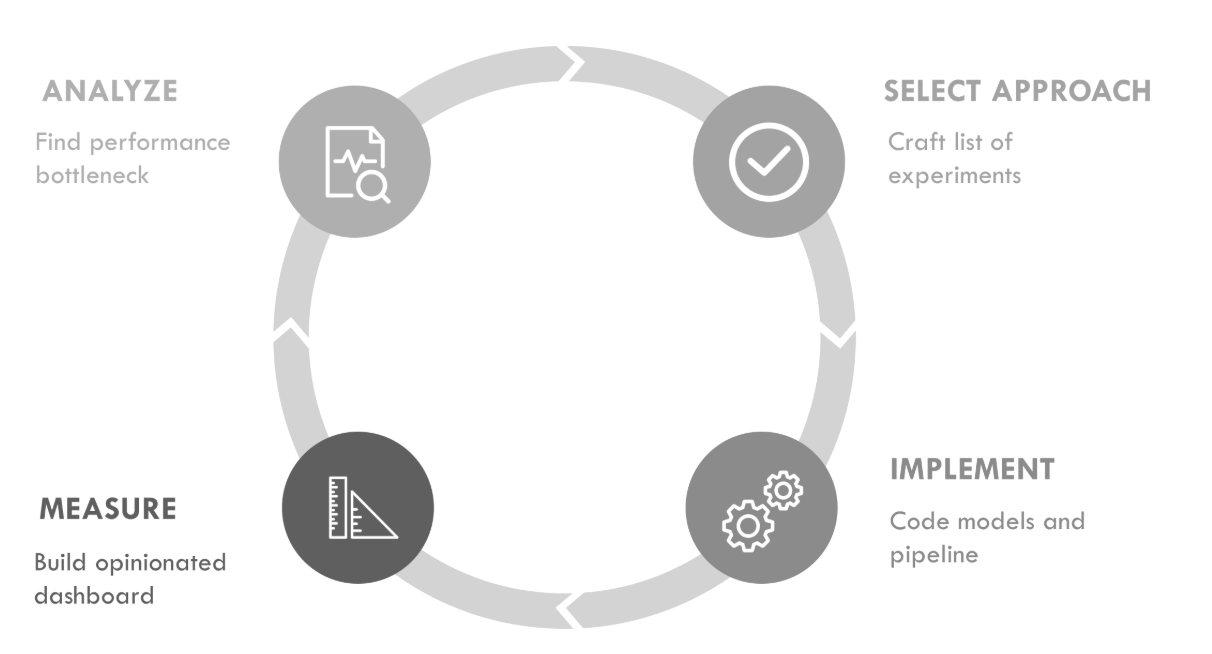Part III. Iterate on Models
Part I covered best practices to set up an ML project and track its progress. In Part II, we saw the value of building an end-to-end pipeline as fast as possible along with exploring an initial dataset.
Because of its experimental nature, ML is very much an iterative process. You should plan to repeatedly iterate on models and data, following an experimental loop as pictured in Figure III-1.

Figure III-1. The ML loop
Part III will describe one iteration of the loop. When working on ML projects, you should plan to go through multiple such iterations before expecting to reach satisfying performance. Here is an overview of the chapters in this part of the book:
- Chapter 5
-
In this chapter, we will train a first model and benchmark it. Then, analyze its performance in depth and identify how it could be improved.
- Chapter 6
-
This chapter covers techniques to build and debug models quickly and avoid time-consuming errors.
- Chapter 7
-
In this chapter, we will use the ML Editor as a case study to show how to leverage a trained classifier to provide suggestions to users and build a fully functioning suggestion model.
Get Building Machine Learning Powered Applications now with the O’Reilly learning platform.
O’Reilly members experience books, live events, courses curated by job role, and more from O’Reilly and nearly 200 top publishers.

